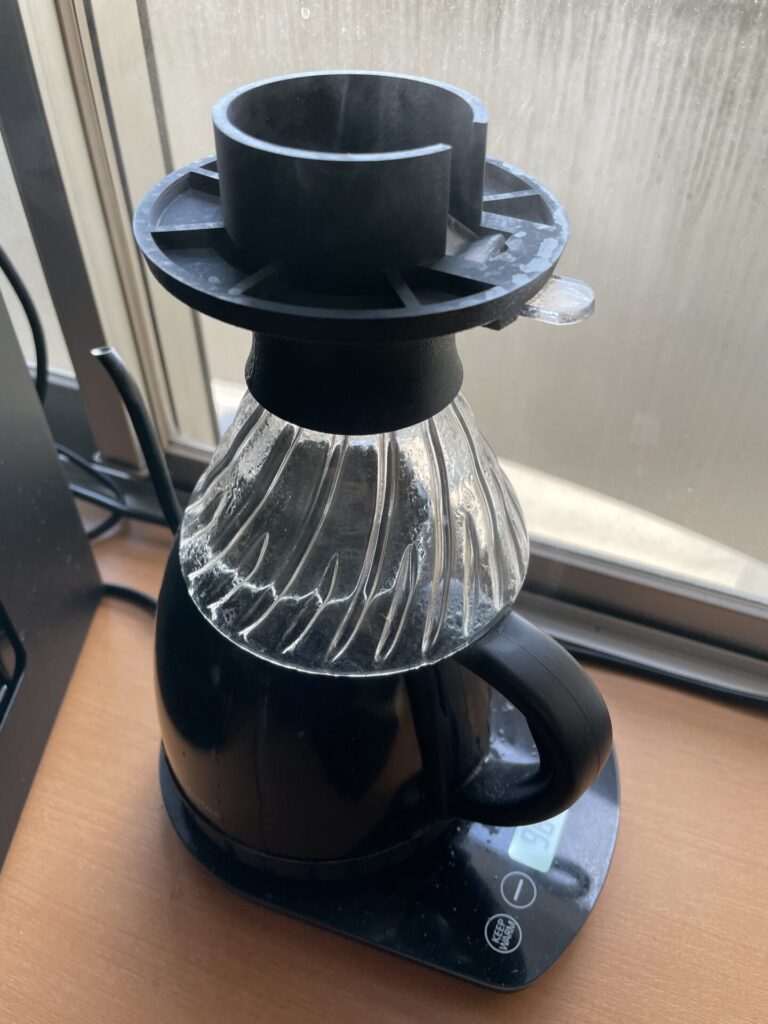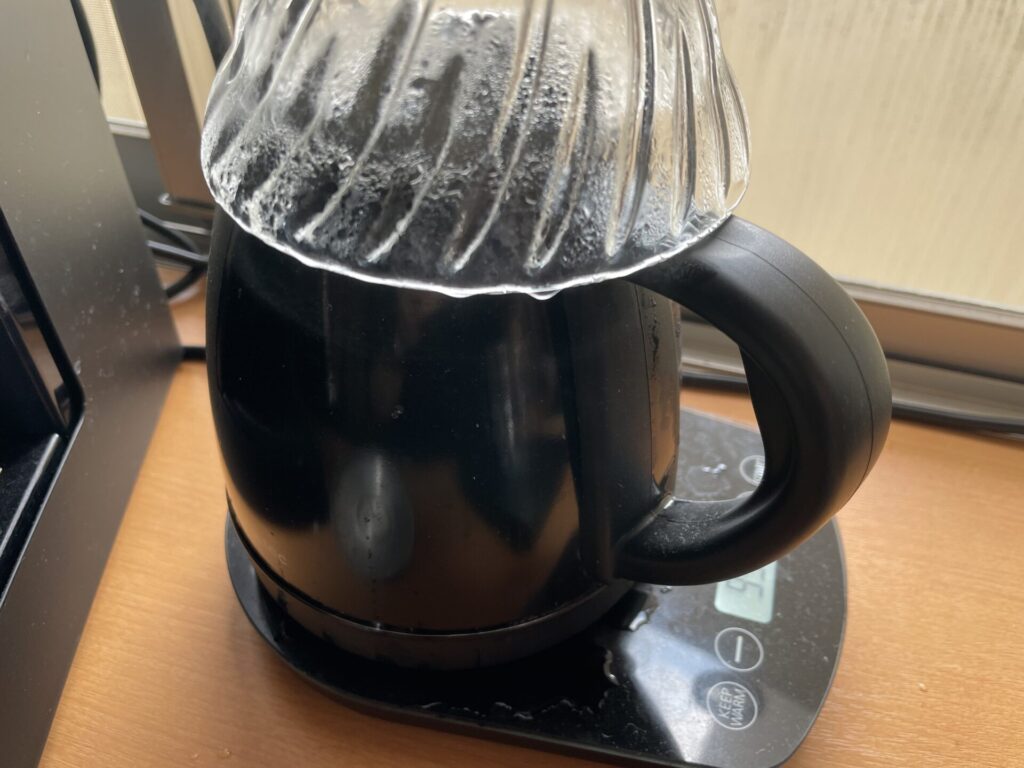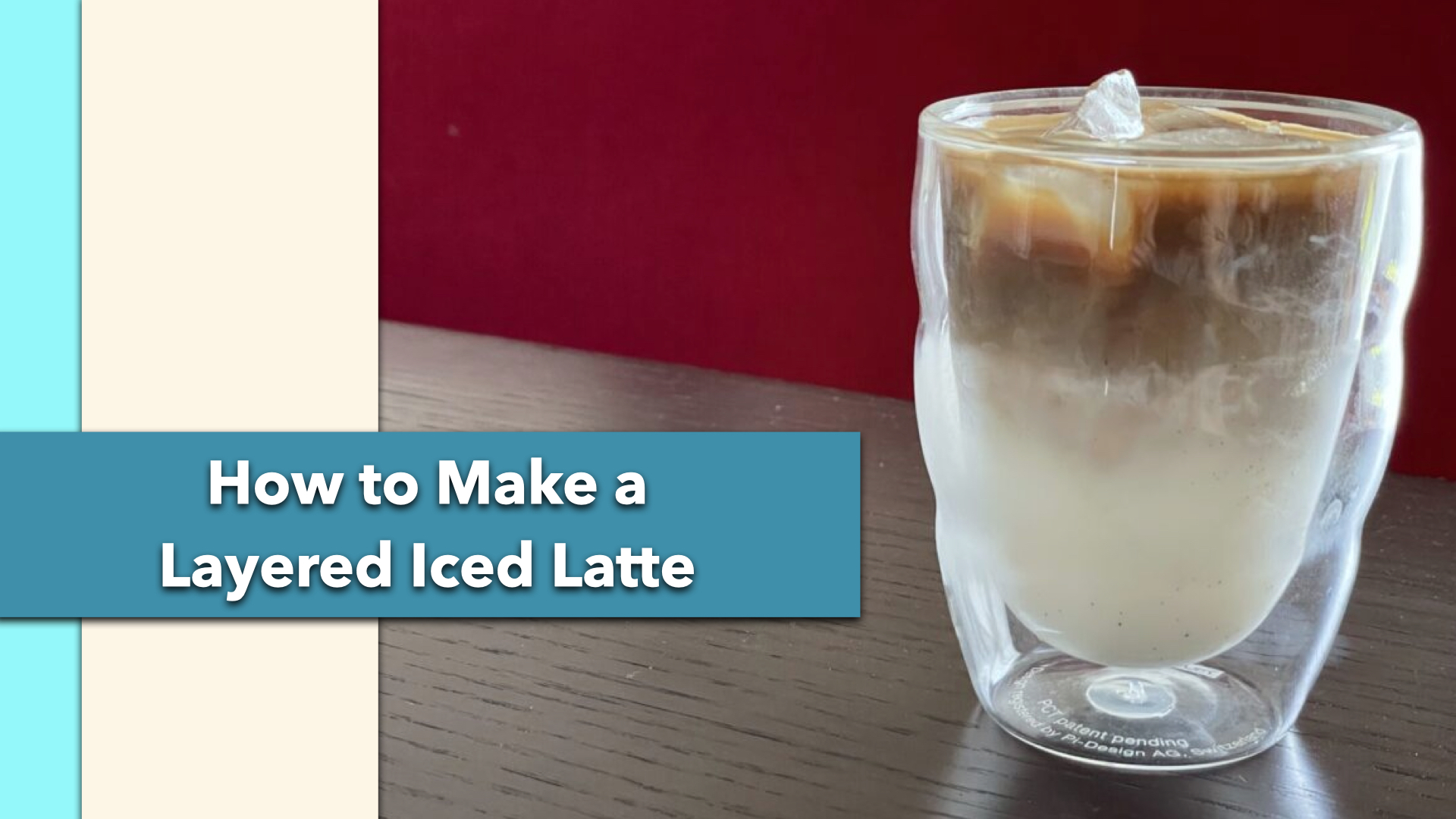Hi there! Do you preheat your dripper?
You probably do right? Otherwise you would not be here.
It a very basic but effective technique to up your coffee but you know that already.
But have you every felt a little bit guilty about wasting hot water to preheat your dripper?
Or do you know how effective your preheat actually is?
The post thumbnail already kind of gives everything away, but I would like to share a way to preheat your dripper with minimal waste.
Also I experimented with different preheating methods to see, how effective each method is at actually heating up your dripper.
You might be a bit surprised at the results.
The method: Put the dripper on top of your kettle
The method is simple. Just flip your dripper upside down and place it on top of your kettle. Make sure that the lid is off.
Just like this.

As you have guessed already, while you boil your coffee water, the steam released will rise and heat up your dripper.
You may have a bit of difficulty in placing the dripper depending on the shape of your kettle. (If it doesn’t work for you, I can only say I’m sorry)
A minor down side of this method is that the condensation from the steam falls from the dripper and makes a bit of a mess. But it’s just water, so it’s not a big deal.

A word of caution, the dripper gets seriously hot with this method. Make sure you do not burn yourself.
Benefits
I believe that the most common way of preheating your dripper is to just pour some boiling water on it, circling around the cone.
Let’s call this common method the pour and fall method.

Compared to this pour and fall method the kettle method has 2 major advantages.
First the kettle method only uses the steam which you are just releasing in to the air. There is no need to boil extra water for the preheating process. Let’s be kind to the environment (where we can)
Second the kettle method is far more effective at preheating. Since with the pour and fall method, the boiling water only contacts the dripper for a short period before falling through. This is actually not nearly enough time for the heat to transfer.
But I hear you, is that really true?
To be honest I also wasn’t too sure myself, so I did some experiments
Experiment
I compared 3 methods of preheating and one without preheating for control, and checked the temperature of the water in the dripper cone.
The exact same dripper, the Hario Switch, was used across all the tests.
The Hario Switch is essentially a glass V60 with a valve at the exit to allow you to stop the water/coffee from falling through. For details of this excellent dripper I did a review in this post.
The reason I chose a glass dripper rather than a plastic one is that for plastic ones preheating is less of a concern.
Plastic has less thermal mass than glass so it affects the brew temperature much less.
Preheating is critical for glass and ceramic drippers.
The 4 tested methods are as follows
- Kettle method : placing the dripper on top of the kettle
- Pour and fall method : pouring 200g of boiling water on the dripper, and just letting it fall
- Pour and steep method : pouring 200g of boiling water in the dripper with the valve closed to keep the hot water in the cone
- No preheat : just a room temp dripper
I used each method to preheat the dripper, then with the valve closed (to emulate some restricted from from coffee grounds) poured 150g of boiling water into the dripper and measured the temperature in the cone.
The results are below.

Let’s look at each from the least effective.
Of course the no preheat one had the lowest temperature at about 82℃. The ranking is as expected, but maybe you did not think the temperature would drop this much. This is almost a 20℃ drop.
Typical brewing temperatures for light roast coffee is above 90℃. It is lower for darker roasts but, 82℃ is too low for even that.
The no preheat results gives us a good base line, and a reassurance that preheating is really necessary.
The next least effective was the typical pour and fall method, at 85℃.
It’s definitely better, but it only made a 3℃ difference. I used a good 200g of boiling water for the preheat (which is more than what is used for brewing), but it just falls too quickly to really heat up the dripper.
The second best was the pour and steep method, at 89℃, this is a significant improvement and we are close to the 90℃ mark.
I used the same about of preheat water, but having a longer contact time really makes a big difference.
The only issue here is, you would need a special dripper like the Hario Switch or some way to stop the water falling through.
Doing this with a normal V60 is quite tricky.
Finally the best was the kettle method, finally surpassing the 90℃ mark, at 91℃.
This is a massive 6℃ improvement over the typical pour and fall method. Considering that the difference between the pour and fall method and no preheat at all is only 3℃, this effectively means this kettle method is 3times as effective.
I think what makes this method so effective is that steam can go above 100℃.
And again, it does not need any extra boiling water, and you can do it with any dripper.
I actually was using the pour and steep method forever, until I came across this method. (Note I did not come up with this)
By doing some experiments, it’s now a no brainer that this kettle method is the best preheat method.
I must admit, it looks a bit silly while you are preheating, but who cares about that right? We just need the best possible coffee!




コメント